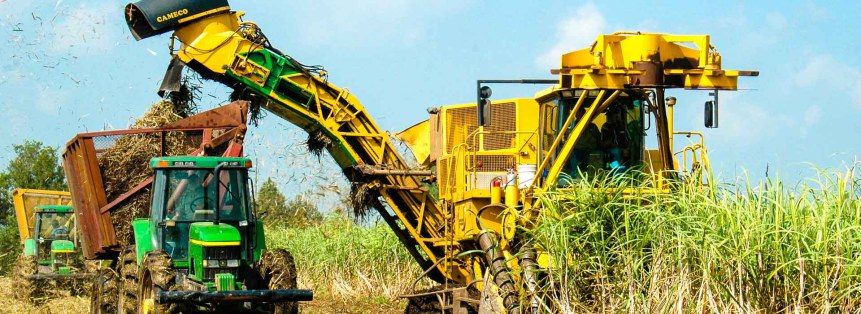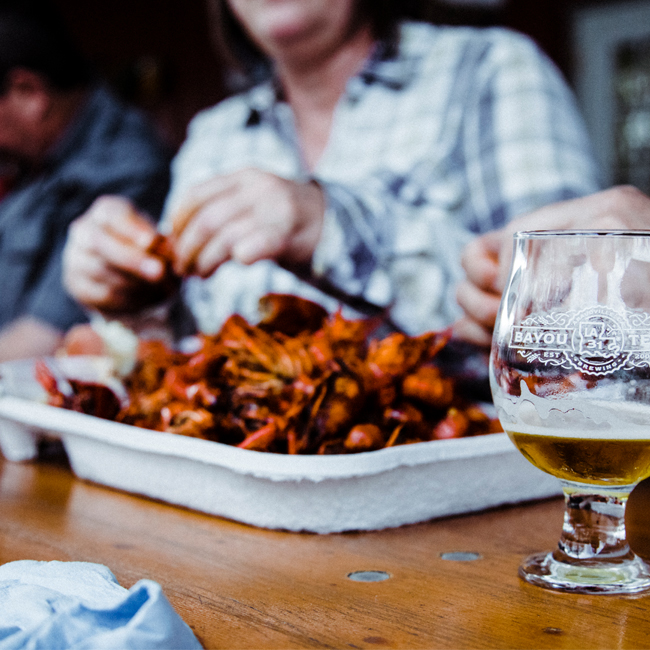Moving Forward Archive

Millions from Farms and Ranches Flow through Parish Economy
Crops and animals are big business in St. Landry Parish, where abundance and diversity of commodities makes us one of the most important agricultural parishes in Louisiana.
St. Landry farmers and ranchers realized more than $183 million at the farm gate in 2014, harvesting crops ranging from alligators to zucchini and raising animals—especially horses—worth more than $30 million annually to the economy.
In terms of acreage planted St. Landry is one of the largest agricultural parishes in the state, according to county agent Vincent Deshotel. At any given time, there are about 250,000 acres in cultivation in the parish, “which is significant,” he says.
Soybean farmers led in parish production in 2014, harvesting 4.8 million bushels from 102,000 acres for a gross farm value of $59.8 million. Rice was the second most valuable crop with a harvest of 2 million hundredweight valued at $29.9 million.
Other significant plant crops were feed grains, primarily corn and sorghum, valued at $9.8 million and sugarcane that brought $6.7 million to the parish. The total for all plant crops, including cotton, wheat, forestry products, fruits, nursery crops, and vegetables was $134.6 million.
Despite those impressive numbers, the average citizen quite often does not recognize how important agriculture remains to St. Landry. That is partly because many of us are a generation or more removed from the family farm, reflecting a trend here, as elsewhere, away from smaller farms to larger operations.
“We have fewer farms than we once did but they encompass more acreage,” Deshotel notes. He points out that several St. Landry operations farm 5,000 acres or more. “That’s a lot of land to work,” he says, “but it’s made possible by modern technology.”
“Today’s farming is big business and we have a very impressive array of agri-business leaders and executives here in St Landry Parish,” said Bill Rodier, director of St. Landry Economic Development. “At economic development we value our partnerships with these leaders as we continually look for ways to provide value added opportunities that complement our agricultural industry as we continue to move St Landry Parish Forward. “
And, even if they are overlooked by much of the citizenry, St. Landry’s farm dollars work their way through the entire parish economy, touching practically everyone here in one way or another.
“In terms of acreage planted St. Landry is one of the largest agricultural parishes in the state.”
Vincent Deshotel, County Agent
“When there is a bad year on the farm, it’s felt in town,” Deshotel says. Equipment dealers, automotive dealerships, feed and seed dealers, bulk fuel dealers, and others who deal directly with farmers and ranchers feel the impact—be it a good year or a bad year—most directly, but, Deshotel points out, farm families are consumers of the same goods and services as everybody else. They buy shoes and groceries and appliances, and when they have a good year they have more money to spend.
Some of that money is spent at Evangeline Downs, or on a trail ride, or caring for a show horse, making the parish’s $16 million horse industry St. Landry’s leading animal enterprise.
A recent study by University of Louisiana economist Dr. Anthony Greco pointed out that Louisiana’s equine investment ranks fifth in the nation in total value—behind only California, Florida, Texas, and Kentucky, and that St. Landry has a significant presence in each of the
three most important industry sectors—racing, recreation, and show and competition.
“The activities associated with the state’s horse industry not only generate value through the production and maintenance of horses,” Greco reported, “they also generate a substantial cash flow” for for investment on the farm or to be spent elsewhere.
Cattle and calf operations are also important to the parish with a value at the farm gate of $15.6 million in 2014. Sheep, goat, and swine production boosted the total for parish animal production to $31.7 million for the year.
Farm-raised alligators brought $2.7 million to the parish, but crawfish were far and away the aquaculture leader with more than 10 million pounds harvested with a value to the farmer of more than $14 million. Crabs and fin fish, mostly from the Atchafalaya River Basin, raised the total for parish aquaculture to $20.2 million.
Opelousas, LA 5367I





